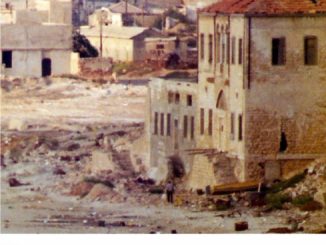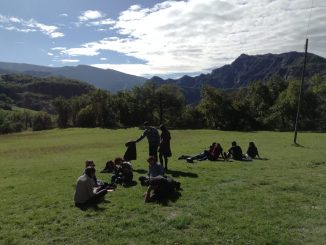
social fragmentation

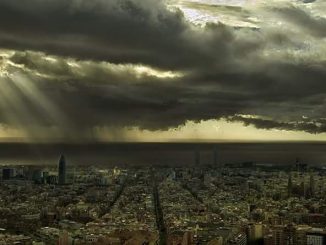
All cities are possessed
“The aim is not to heal a sick space, but to free it from its evil condition: to save it. Urban space must be regenerated, its vices turned into virtues, its inhabitants redeemed from sin. The real enemy is not disorder, chaos, or poverty; the real enemy is the devil itself” (Manuel Delgado, “Todas las ciudades están poseídas”)
There is an intimate link between cities and the devil. All cities were born to contrast the terror of the wilderness, the dangers of the wasteland, and they are built around an axis mundi that protects its inhabitants from evil. Inevitably, they all betrayed this task. Inside them, other forces proliferate, more perverse than those of the wilderness. The bustle of the city, its promiscuous and uncontrolled intermingling of bodies, ideas, and actions, cause a moral panic far more terrifying than the dangers of nature.
All the recurring calls to regenerate and renovate the city, or at least the more disturbing parts of it, are always calls to expel the devil. The words that are used for it – culture, order, law – are apotropaic, like psalms or mantras that are pronounced in order to contrast the Evil by evoking its opposite, a ‘Good’ as imaginary and dreamlike as the other. Urban renewal is an exorcism: it aims to chase the demons away, to kill the unwanted and uninvited ‘others’, to purify the body of the city, and to return it clean and renovated to its legitimate owners – those imaginary and neutral ‘subjects’ to whom public space is thought to belong.
No violence is too much, to achieve this task. Whoever tries to oppose the sacred duty to chase away the Evil one, will be considered as dangerous as those who defended the witches, the sabbas, or heresy.
- Manuel DELGADO “Todas las ciudades están poseidas“, preface to Miquel Fernández’s book Matar al chino (Virus, 2016), on the demolition of Barcelona’s neighborhood of Raval (“Barrio chino”).
- Video of Manuel Delgado’s conference “Todas las ciudades están poseídas” at the conference Ciudadanía y espacio público en la ciudad neoliberal in México DF, november 2017.
- This documentary shows perfectly the demoniac imaginary projected on Barcelona’s city center, and especially on the Raval: “El carrer de la Cera“, 30 minuts, TV3, 1996.
- Many anthropologists underlined the political aspects of spirit possession, since Jean Rouch’s great classic Les maîtres fous (1955). A more modern example: Leslie A. Sharp (1996), The Possessed and the Dispossessed, on spirit mediums in Madagascar.
Other cities, other demons:
- Chiara ZANASI (2016) Demoni e metropoli, Manifestolibri, on the christian exorcist father Amorth, active in Rome until few years ago. A presentation of the book by Stefano Portelli, in a conference in the University of Rome.
- Federica DI GIACOMO (2016) “Liberami“, documentary on the exorcist father Cataldo, active in Palermo. Here’s a critique to the movie by another exorcist, father Dermine.
- Andrew Alan JOHNSON (2014), Ghosts of the New City, University of Hawaii Press. Ghosts pentrated into the imaginary of the old buildings in Chiang Mai (Thailand); but the new urbanization are not free from evil either.
- Michael HERZFELD (2016), Siege of the Spirits: Community and Polity in Bangkok, University of Chicago Press. In Bangkok, however, residents of the ancient settlement of Pom Mahakan, under eviction, claim their right to stay, as the guardians of the shrines to the ancestors of the city. The spirits that protect the city would not agree with the demolition of the neighborhood.
- Ernesto DE MARTINO (2009 (1959)) Magic, A Theory From The South. HAU Books recently translated into English this classic of the great Italian ethnographer, whose original title was South and Magic. The complete text is available online! And here’s a review by Stefano Portelli in the Journal of the Royal Anthropological Institute, 2017 [PDF]. The book includes an extraordinary chapter on popular magic in Naples and on the ambivalence of Italian Enlightenment towards it. Another very important work is its posthumous book, incomplete: La fine del mondo (Einaudi, 1977).
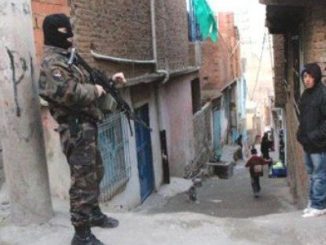
War and gentrification in Kurdistan

Crossing the capital of culture: summer in Marseille
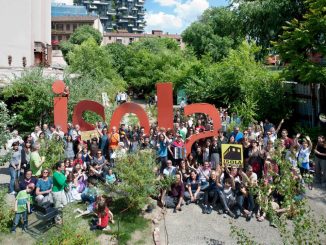
Same old story in Milan: The destruction of Isola
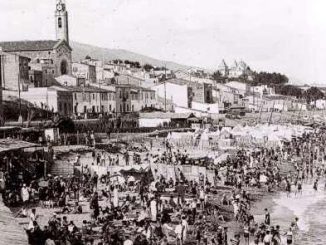
Working-class holidays on Barcelona’s coast: a chronicle of Montgat
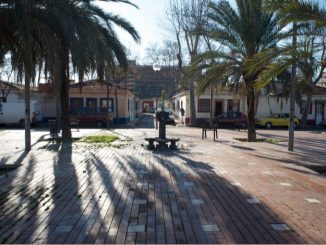
Horizontal anthropology in the margins of Barcelona
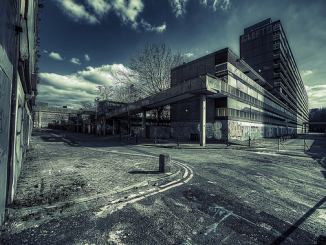
Heygate Was Home!
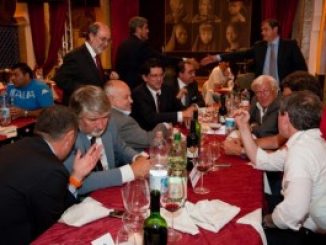
The fall of the Roman Empire
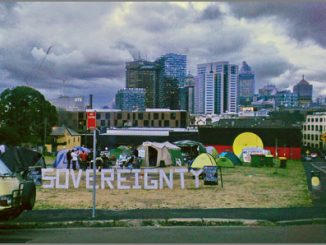
Sydney, a (post)colonial city

The ghosts of San Berillo
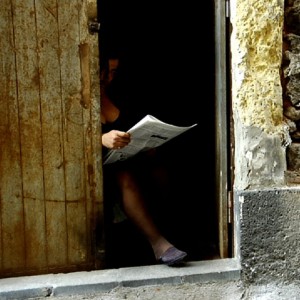 Different cities follow one another on the same site and under the same name, writes Italo Calvino, born and dying without knowing one another, without communication among themselves. At time even the names of the inhabitants remain the same, and their voices’ accent, and also the features of the faces; but the gods who live beneath names and above places have gone off without a word and outsiders have settled in their place. It is pointless to ask whether the new gods are better or worse than the old, since there is no connection between them… We recommend you another Italian documentary movie: Edoardo Morabito and Irma Vecchio’s I fantasmi di San Berillo (2013), first prize at Torino Film Festival. The demolition of this old neighbourhood in the centre of Catania (Sicily), in 1958, was the biggest urban evisceration in post-war Italy, linked (as everything in the country) with Vatican’s Società Generale Immobiliare: 30.000 people where displaced towards the peripheries. It was the same year in which brothels were banned: prostitutes were forced to work underground, and what was left of San Berillo turned into one of the biggest “red light districts” of the Mediterranean. So the story of the neighbourhood went on for another half century, until 2001, when a new police operation evicted again prostitutes and transvestites from their houses and streets. Today many plots are still unoccupied, and some became new favelas (see this 2012 video). The documentary shifts visually from past to present, and the images are associated with the fascinating words of writer Goliarda Sapienza, born in San Berillo in 1924.
Different cities follow one another on the same site and under the same name, writes Italo Calvino, born and dying without knowing one another, without communication among themselves. At time even the names of the inhabitants remain the same, and their voices’ accent, and also the features of the faces; but the gods who live beneath names and above places have gone off without a word and outsiders have settled in their place. It is pointless to ask whether the new gods are better or worse than the old, since there is no connection between them… We recommend you another Italian documentary movie: Edoardo Morabito and Irma Vecchio’s I fantasmi di San Berillo (2013), first prize at Torino Film Festival. The demolition of this old neighbourhood in the centre of Catania (Sicily), in 1958, was the biggest urban evisceration in post-war Italy, linked (as everything in the country) with Vatican’s Società Generale Immobiliare: 30.000 people where displaced towards the peripheries. It was the same year in which brothels were banned: prostitutes were forced to work underground, and what was left of San Berillo turned into one of the biggest “red light districts” of the Mediterranean. So the story of the neighbourhood went on for another half century, until 2001, when a new police operation evicted again prostitutes and transvestites from their houses and streets. Today many plots are still unoccupied, and some became new favelas (see this 2012 video). The documentary shifts visually from past to present, and the images are associated with the fascinating words of writer Goliarda Sapienza, born in San Berillo in 1924.
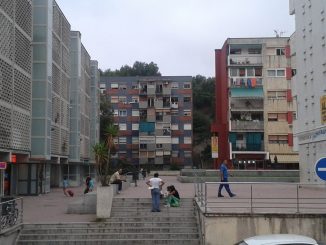
Ciudad Meridiana… exists!
The history of the neighbourhood of Ciudad Meridiana is a perfect summary of Barcelona’s urbanistic schizofrenia. Built in the Sixties on a land accounted as too damp to build a cemetery, with no transportation or services, secluded and unfit to live in, but with a strong neighbours’ movement, it has always been a problematic territory, unknown to the rest of the population: many of its inhabitants started to leave it already in the Eighties, trying to climb socially and spacially, getting over the decade in which the neighbourhood population reached its peak. Since 2001, when Catalonia and Spain were still inside the “housing market bubble”, the immigrants began arriving to Ciudad Meridiana, through mortgages the banks offered crossing the endorsements, and through other tricks that the financial capital used to “infiltrate the world of the urban poor”, as anthropologist Jaime PALOMERA writes in his essay about the neighbourhood. After the crisis began, Ciudad Meridiana was described as an eviction city, and now again for its strong neighbours and squatters movement. Recently there was an interesting debate: the City Council proposed to establish there an innovative “FabLab” related with MIT, but the neighbours reclaim that same spot for a food bank, much more useful to face the growing poverty of many families [see article here].
- Jaime PALOMERA (2013) “How did finance capital infiltrate the world of the urban poor: home ownership and social fragmentation”, International Journal of Urban and Regional Research [download pdf – article on Wiley]
- Photoreportage in Diagonal: “Infiernos y solidaridades en Ciudad Meridiana“
- Ciudad Meridiana PHOTO ALBUM by José Mansilla, 2013 (and one 1966 photo).
- Some more references: La Directa “Resistance in Eviction City” :: Lavanguardia.com “To invent or to eat?” :: elperiodico.com “Rice, oil and milk… or research and development?” :: Elpais.com “Ciudad desahucio” (eviction city), 20minutos “Villa desahucio” , Abc.com “Three evicted families establish in the squatted building”
- Links: Associació de Veins de Ciutat Meridiana :: Associació 500×20 Prou Especulacio :: Some questions to Associació 500×20 [in PDF]

The protector of Phnom Penh

Conference in Bolonia: the subjective dimensions of vulnerability
On october 5th, in Bolonia (Italy) the Network for the Evaluation of the Subjective Dimensions of Vulnerability (REDISUV) Chile-Europe will meet for the second time, after the foundational Conference in Paris. The repeated natural catastrophes in Chile made evident the need for a more systematic study about the subjectivities of the communities affected, which are always the product of particular social, economical and political conditions. The program of the conference includes papers concerning natural desasters, but also approaches to the “urban” vulnerability, caused by neoliberal policies as the one our group has been studying in Barcelona.
- Bolonia, Thursday september 5th, 10am-6pm: “Vite invisibili: dimensioni soggettive della vulnerabilità sociale“, program in PDF.
- Davide Olori (2013) “Taking over the center to oppose evictions: the case of the Inmuebles Recuperados Autogestionados en Santiago de Chile” [PDF, italian]. “The urgency for housing after the earthquake forced towards the aggregation of both informal organizations (as neighbours, relatives, co-workers) and formal ones (political, parties…), so causing dynamics of rupture and recomposition among interests, hierarchies, relationships…”
- Fabio Carnelli studied ethnographically the consequences of the earthquake in L’Aquila (central Italy) some years after: the “militarized” solution brought again to life the traumas, and increased the vulnerability of the population. See Sismografie on Il lavoro culturale webpage. And also Rita Ciccaglione’s article, one year after the earthquake in Emilia Romagna.
- Caterina Borelli jsut published on academia.edu her PhD thesis about Sarajevo: “La ciudad post-traumática” (see also this older post)
- Stefano Portelli (2013) “Spatial reordering and social pathology in the periphery of Barcelona: the social impact of urban transformation”, intervención al XXI congreso del International Social Theory Consortium, Copenhagen, June 26-27th [Coming soon!]
